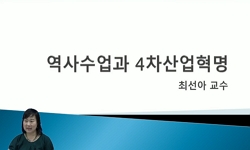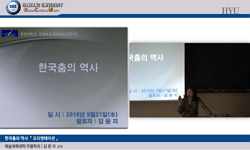『본조여사』는 1898년에 편찬된 우리나라 최초의 여성사이다. 편저자 김상집은 현모, 열녀부터 조선사회에서 가장 하위주체였던 첩, 여종, 기녀까지 대상의 신분 에 대한 스펙트럼을 넓게 ...
http://chineseinput.net/에서 pinyin(병음)방식으로 중국어를 변환할 수 있습니다.
변환된 중국어를 복사하여 사용하시면 됩니다.
- 中文 을 입력하시려면 zhongwen을 입력하시고 space를누르시면됩니다.
- 北京 을 입력하시려면 beijing을 입력하시고 space를 누르시면 됩니다.
https://www.riss.kr/link?id=A108989384
-
저자
황수연 (홍익대학교)
- 발행기관
- 학술지명
- 권호사항
-
발행연도
2024
-
작성언어
Korean
-
주제어
기녀 ; 하위주체 ; 본조여사 ; 김상집 ; 역사 ; 재현 ; giseang ; subaltern ; Bonjoyeosa ; Kim Sang jip ; history ; representation
-
KDC
810
-
등재정보
KCI등재
-
자료형태
학술저널
-
수록면
249-280(32쪽)
- DOI식별코드
- 제공처
-
0
상세조회 -
0
다운로드
부가정보
국문 초록 (Abstract)
『본조여사』는 1898년에 편찬된 우리나라 최초의 여성사이다. 편저자 김상집은 현모, 열녀부터 조선사회에서 가장 하위주체였던 첩, 여종, 기녀까지 대상의 신분 에 대한 스펙트럼을 넓게 잡았다. 편저자가 유교적 지식인이었음에도 불구하고 신분의 구애 없이 하위주체를 역사적 인물로 소환하여 공적으로 인정한 것은 주목할 만하다. 이에 본 연구는 하위주체 기녀에 대한 역사적 재현한 양상과 그 의의를 살펴보았다. 기녀는 기역을 담당하는 현장에서 정치적 감각을 익히고 안목을 키웠다. 그리고 자신의 생각을 소신껏 드러내고 비판적 언사도 서슴지 않았다. 사대부 남성과 탈성애적 만남을 통해 인정하는 관계를 형성하였다. 나아가 남성에게 받은 시첩을 상징 자본으로 만들어 생존 전략을 짜기도 하였다. 가부장적 가족 내로 편입하기 위해 윤리 규범을 따랐고 자신의 성적 자율권을 지키고 자유 의지를 실현하기 위해 노력하였다. 자신들에 게 허용된 언어를 통해 비주류로서의 삶을 반추하며 자의식을 드러냈다. 김상집은 기녀를 파편화된 주체로 접근하고 주변화된 하위주체 여성들의 목소리와 서사를 회복하고자 하였다. 이로 인해 기녀의 복합적 정체성을 확인할 수 있 으며 하위주체의 역사적 주체로서의 가능성을 발견할 수 있다. 『본조여사』속 기녀를 통해 전근대 기녀와 근대 기녀의 사회적 역할을 사적으로 조망할 수 있다.
다국어 초록 (Multilingual Abstract)
『Bonjoyeosa』 is Korea's first women's history, compiled in 1898. Editor Kim Sang-jip covered a wide spectrum of subjects' status, from wise mothers and virtuous women to concubines, female servants, and gisaeng, who were the lowest subjects in Jos...
『Bonjoyeosa』 is Korea's first women's history, compiled in 1898. Editor Kim Sang-jip covered a wide spectrum of subjects' status, from wise mothers and virtuous women to concubines, female servants, and gisaeng, who were the lowest subjects in Joseon society. Although the editor was a Confucian intellectual, it is noteworthy that he summoned lower-ranking subjects as historical figures and publicly recognized them without regard for status. Accordingly, this study examined the historical representation and significance of the lower-class gisaeng through his work. Gisaeng acquired political sense and developed insights into the field of government. She expressed her thoughts to the fullest and did not hesitate to make critical remarks. She formed an accepting relationship with a man through a post-sexual encounter and further developed her survival strategy by turning the concubines she received from men into symbolic capital. She followed her own ethical code to integrate into her patriarchal family and strived to preserve her own sexual autonomy and realize her free will. She revealed her self-consciousness by reflecting on her life as a non-mainstream person through the language allowed to her. Kim Sang-jip approached gisaeng as a fragmented subject and attempted to recover the voices and narratives of marginalized women. As a result, the complex identity of gisaeng can be confirmed and the possibility of being a subordinate subject as a historical subject can be discovered. Through the gisaeng in 『Bonjoyeosa』, we can get a personal look at the social roles of both pre-modern and modern gisaeng.
목차 (Table of Contents)
- 국문초록
- 1. 들어가는 말
- 2. 하위주체의 역사적 재현
- 3. 하위주체에 대한 역사적 재현의 의의
- 4. 맺는 말
- 국문초록
- 1. 들어가는 말
- 2. 하위주체의 역사적 재현
- 3. 하위주체에 대한 역사적 재현의 의의
- 4. 맺는 말
- 부록
- 참고문헌
- Abstract
동일학술지(권/호) 다른 논문
-
- 열상고전연구회
- 박재민
- 2024
- KCI등재
-
이황과 이이의 사단칠정설에 대한 정조와 정약용의 문답 속 평론 비교 - 성리학과 서학과 관련하여 -
- 열상고전연구회
- 이종우
- 2024
- KCI등재
-
- 열상고전연구회
- 권순긍
- 2024
- KCI등재
-
安錫儆이 제안한 『大東詩選』의 選詩 기준과 選詩의 實際
- 열상고전연구회
- 김형술
- 2024
- KCI등재





 KCI
KCI eArticle
eArticle






